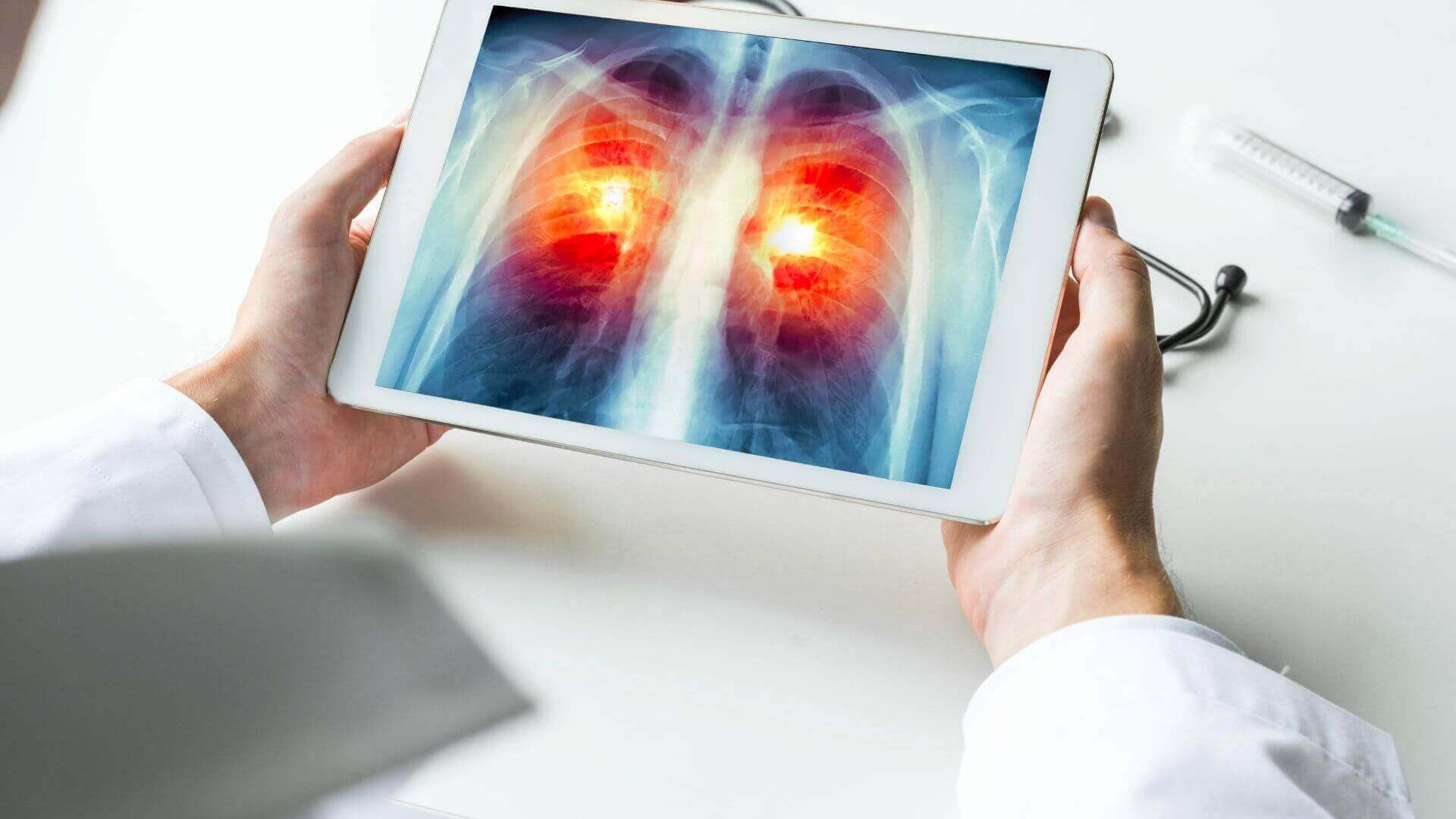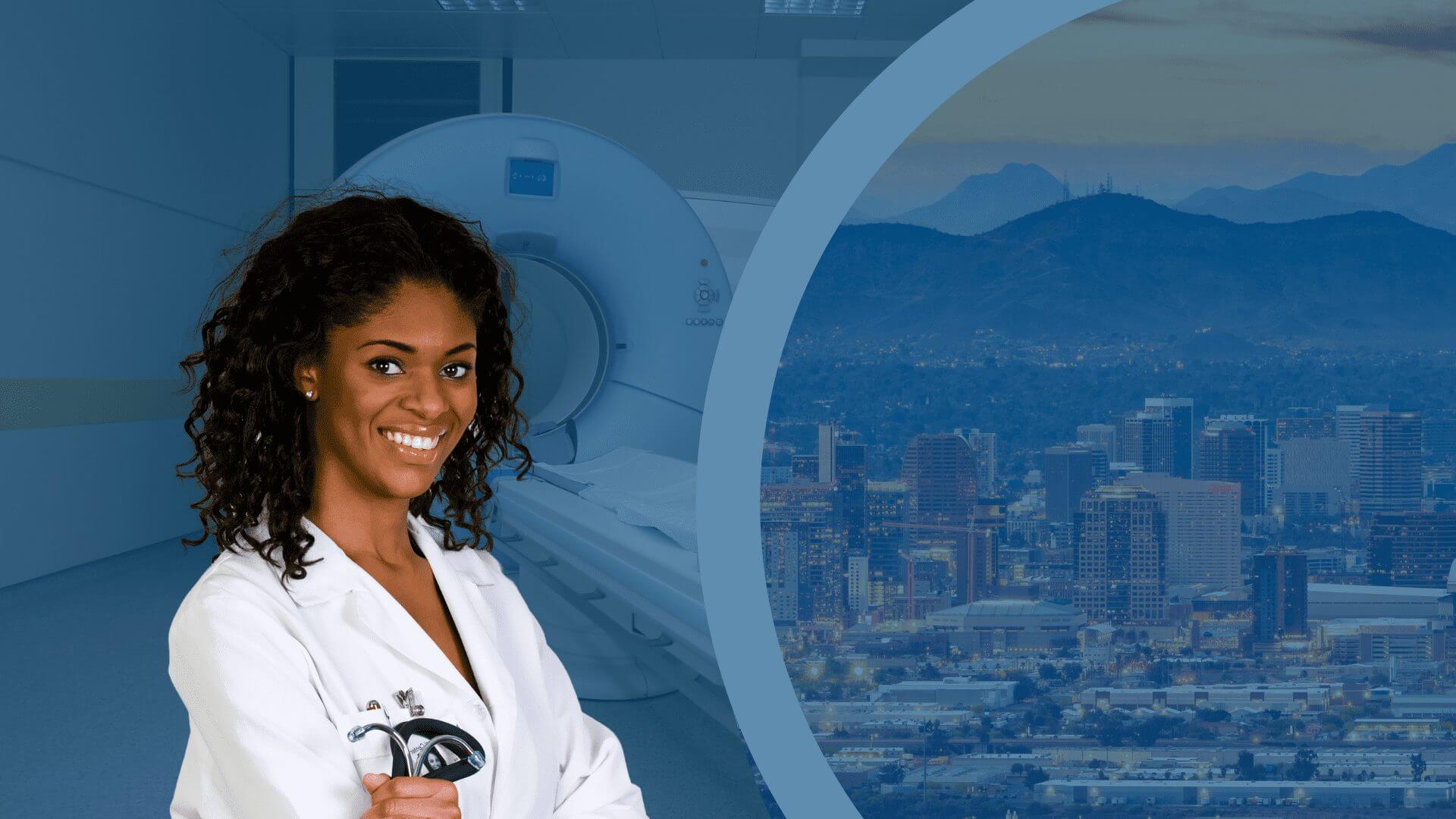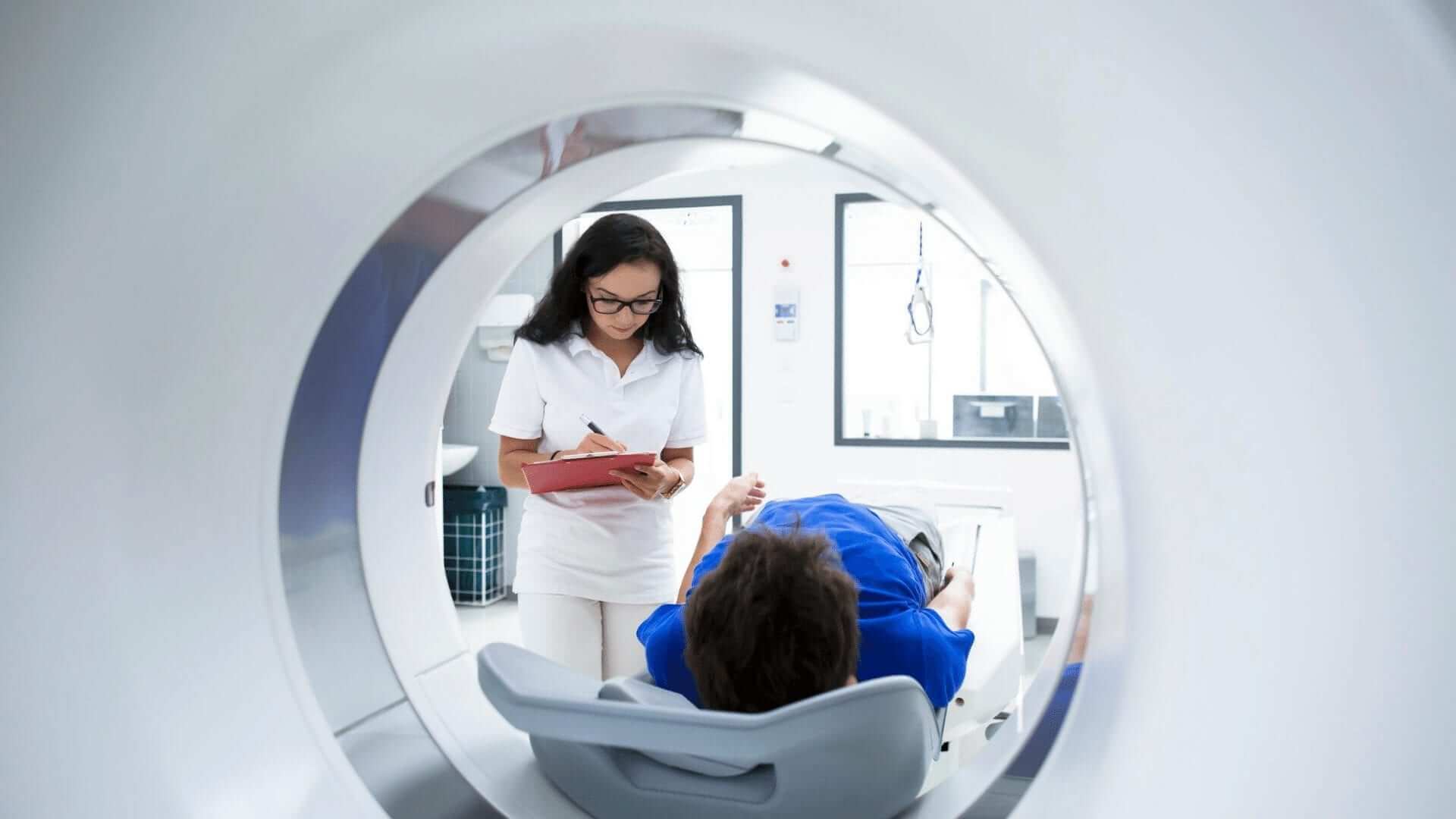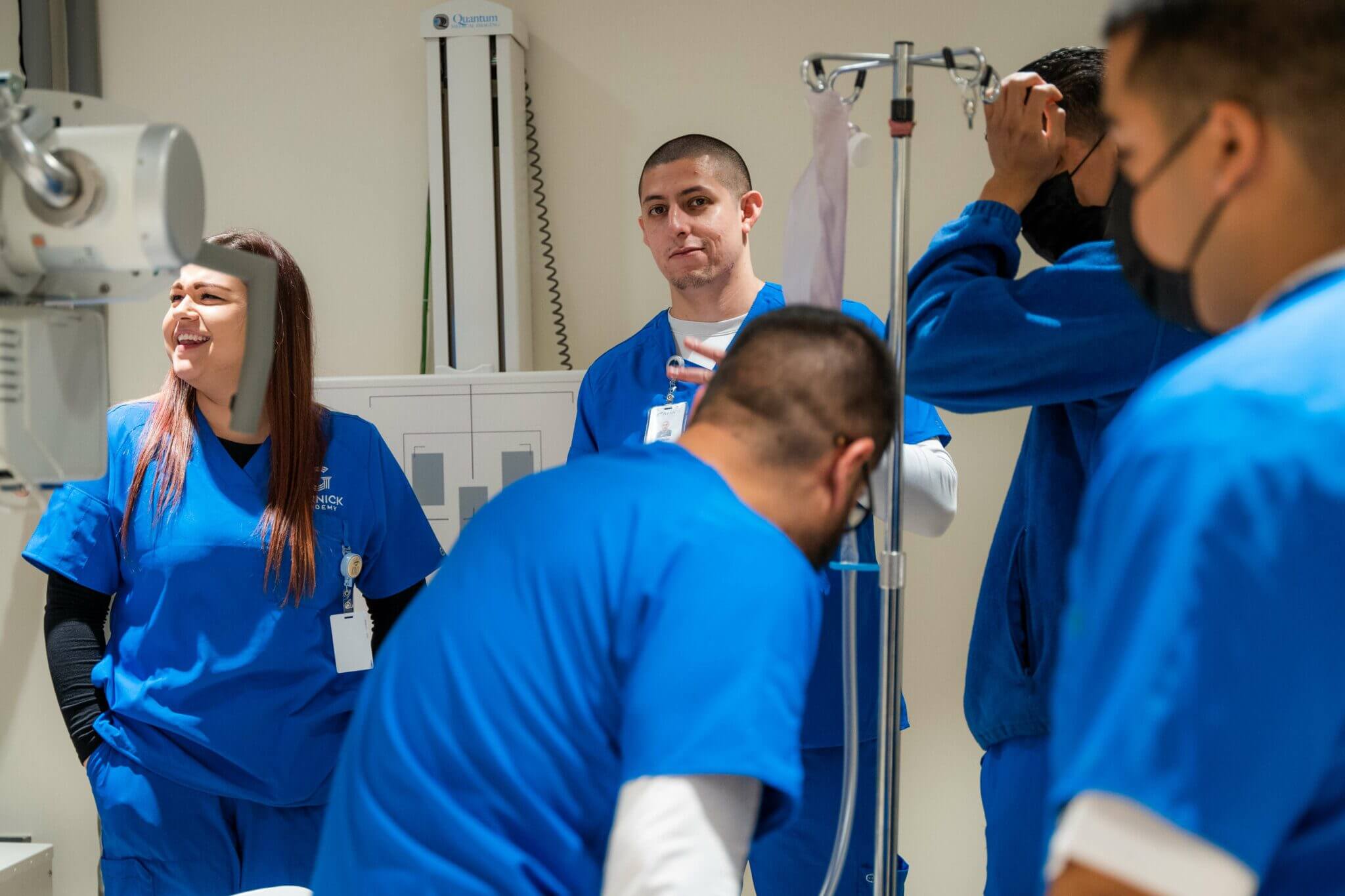Career Opportunities with Radiologic Training
Date: August 3, 2022
Overall, radiologic training can prepare one for a career in science and health. Involving advanced equipment and practices within the medical field, Radiologic Technologists perform imaging examinations. Specifically, they accurately position patients while ensuring quality diagnostic images are produced.
On the whole, Radiologic Technologists work closely with radiologists. So procedures may be completed, imaging examinations must first be performed and images obtained by Radiologic Technologists.1
Growth in the Field
By and large, imaging technologies are growing throughout the U.S. So much so that according to the Bureau of Labor and Statistics, the X-ray field is expected to expand by approximately nine percent throughout the next decade.2 Additionally, over the next ten years, more than 20,800 openings for Radiologic and MRI Technologists are projected to open each year.2 Ultimately, there is also a growing demand for these professionals within urban and rural areas.
Happiness in the Field
According to U.S. News and World Report, “Best Jobs,” Radiologic Technology scored 5.3 out of ten in job satisfaction using multiple career indicators. While the vocation is rated No. 21 in “Best Healthcare Support Jobs,” with a reported unemployment rate of only 6.3 percent.3*
Specialties in the Field
All things considered, Radiologic Technologists often specialize in multiple areas. According to the American Society of Radiologic Technologists (ASRT), additional modalities they pursue include some of the following:
- Computed Tomography (CT)
- Cardiac Interventional Radiography
- Vascular Interventional Technologists
- Magnetic Resonance Imaging (MRI)
- Mammography
- Bone Density
- Nuclear Medicine
- Sonography
- Radiologist Assistants
Due to their popularity, we shall provide explanations of these areas below.
I. Computed Tomography (CT)
By definition, Computed Tomography (CT) occurs when X-rays are passed through the body, interpreted by computers, then converted to signals. Whereby a computer then processes them to generate cross-sectional images or “slices” of the human body. In short, such slices are called tomographic images. Ultimately the scans contain more detailed information than conventional X-rays.4
II. Cardiac Interventional Radiography
Another modality, Cardiac Interventional Radiography, comprises minimally invasive, image-guided procedures to help diagnose and treat heart and blood vessel diseases. Remarkably this is accomplished without surgery. Using this innovation, technologists use sophisticated fluoroscopic equipment to take images of the heart and blood vessels. Similarly, the same technologists often assist with angioplasty, stenting, thrombolysis, embolization, ablation, and biopsies.5
III. Vascular Interventional Radiography
Likewise, Vascular Interventional Radiography is a procedure using sophisticated imaging to guide catheters, vena cava filters, stents, and other interventional tools through the veins and arteries. In essence, the technique allows professionals to treat the body internally without open surgery. Significantly, this treatment requires patients to be sedated.
Typically, the procedure is referred to as microsurgery. Moreover, Interventional Radiography is one of the few medical imaging modalities that offers 4-D imaging, in which a 3-D image can be viewed, manipulated, then used.5
IV. Magnetic Resonance Imaging
Yet, another imaging technique, Magnetic Resonance Imaging (MRI), occurs when atoms in a patient’s body are exposed to a strong magnetic field. Afterward, a radio frequency pulse is applied to the magnetic field, knocking the atoms out of alignment. When the pulse ceases, atoms return to their original positions, give off signals measured by the machine, and produce detailed images. Finally, images are reconstructed to create 3-D representations of bodily areas.5
V. Mammography
A fifth technique, the mammogram, produces diagnostic images of breast tissue using special X-ray equipment. Under the federal Mammography Quality Standards Act, mammographers must meet stringent educational and experience criteria to perform mammography procedures. Breast imaging is the latest diagnostic imaging technology to offer 3-D representations of the anatomy using the advancement called digital breast tomosynthesis (DBT).5
VI. Bone Densitometry
Sixth, Bone Densitometry uses a particular type of X-ray equipment to measure bone mineral density at a specific anatomical site. (Usually, this is the hip, spine, or forearm.) Overall this is to calculate total body bone mineral content. In short, results can be used to evaluate bone loss, track bone loss rates, and estimate fracture risks.5
VII. Nuclear Medicine
Seven, Nuclear Medicine is a specialty. Primarily this is used in the administration of trace amounts of radiopharmaceuticals to patients. In the process, special scanners detect gamma rays emitted by radiopharmaceuticals. Altogether, it creates images of the body to obtain functional information about organs, tissues, and bones.5
VIII. Sonography
Eight, Sonography uses sound waves to obtain images of organs and tissues. During an ultrasound examination, a transducer is placed in contact with the patient’s body. The transducer emits high-frequency sound waves that pass through the body, sending back “echoes” as they bounce off organs and tissues. Specialized equipment then converts those echoes into images.5
IX. Radiologist Assistants
Nine, another specialty, the Radiologist Assistant, is an experienced, registered radiographer. Most often, this person obtained additional education and certification that qualifies them to serve as radiologist extenders. Generally, they work under the supervision of a radiologist to provide advanced patient care, perform imaging examinations, and communicate initial observations to a supervising radiologist.
Unique Opportunities in the Field
In summary, whether one generalizes or specializes, Radiologic Technologists are valuable members of healthcare teams. Specifically, they support doctors and radiology teams to diagnose, treat, and cure patients. These professionals have unique opportunities to detect broken bones, deliver radiation therapies, help eradicate cancerous tumors, and more. They often stand in front of wellness detection.
Does this sound like an exciting career to you? To ask another way, have you considered imaging as a vocation that makes a real difference in others’ lives while improving your own? If so, see our program here.~
* Employment Results May Vary
Citations:
1 Staff. “Careers in Radiologic Technology-ASRT.” American Society of Radiologic Technologists (ASRT). 2019. (Accessed Feb. 4, 2022.)
2^a, b Bureau of Labor Statistics. U.S. Department of Labor, Occupational Outlook Handbook. Radiologic and MRI Technologists. (Accessed Feb. 4, 2022.)
3^a, b Bratcher, Emily. “Radiologic Technologist Ranks among Best Jobs of 2020.” Money.usnews.com. U.S. News and World Report. June 3, 2020. (Accessed Feb. 4, 2022.)
4 “Computed Tomography (CT).” Science Education. National Institute of Biomedical Imaging and Bioengineering, U.S. Department of Health and Human Services. (Accessed Mar. 2, 2022.)
5^a, b, c, d, e Staff. “Careers in Radiologic Technology.” American Society of Radiologic Technologists (ASRT). 2019. (Accessed March 2, 2022.)






